ChatGPT:
The North York Moors in England is a vast expanse of upland moorland located in North Yorkshire, covering approximately 1,436 square kilometers (554 square miles). It is one of the UK’s National Parks, designated in 1952, and is known for its dramatic landscapes, ancient history, and rich biodiversity.
Origin and Geography
• The North York Moors was formed during the Jurassic period (around 150–200 million years ago).
• The region consists of limestone, sandstone, and shale, with its characteristic heather-covered plateaus shaped by glacial and erosional processes during the Ice Ages.
• Its highest point is Urra Moor, reaching 454 meters (1,490 feet) above sea level.
• The landscape is marked by rolling hills, deep valleys (called dales), and rugged coastlines along the North Sea, including the striking cliffs at Robin Hood’s Bay.
Early History
• Prehistoric Settlements: Archaeological evidence shows human activity dating back to the Mesolithic period (10,000–4,000 BC), with stone tools found in the region.
• Bronze Age and Iron Age: Burial mounds, cairns, and hillforts were constructed, such as Roulston Scar.
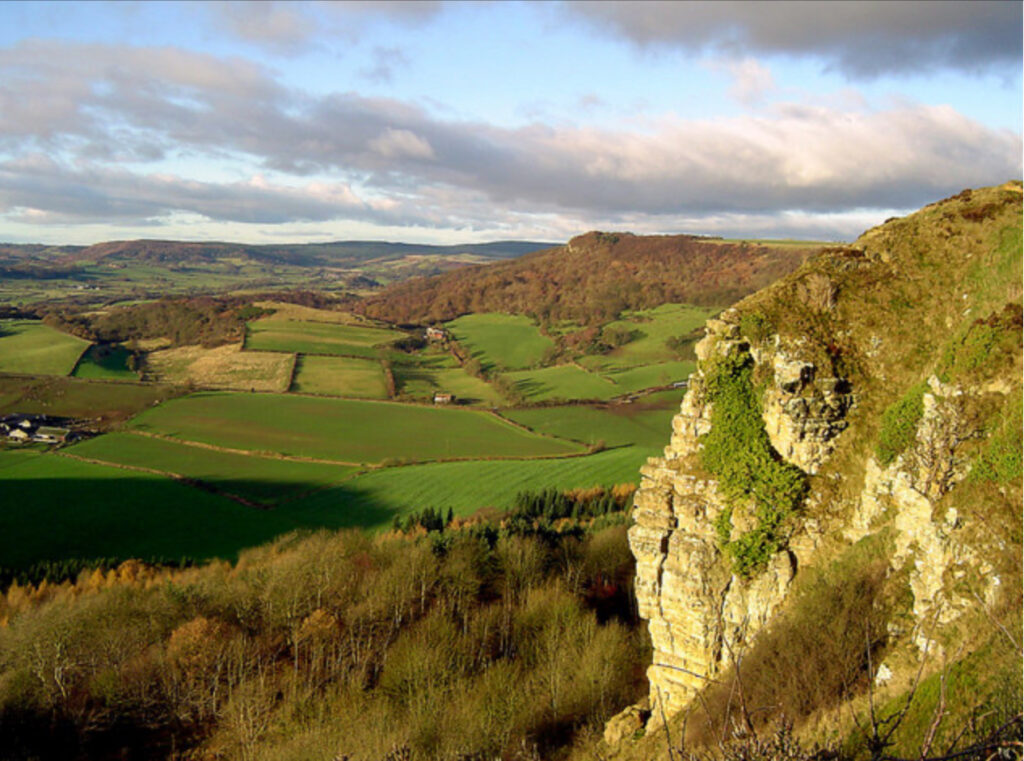
• Roman Influence: The Romans built roads and forts, particularly to secure trade routes and control the area.
• Anglo-Saxon and Viking Periods: The region saw Norse settlements, leaving behind place names with Old Norse origins, especially near the coast.
Medieval and Religious Development
• The Norman Conquest (1066) led to the building of castles and monasteries, the most famous being Rievaulx Abbey (founded in 1132).
• The abbeys became centers of religious devotion and economic activity, playing a significant role in sheep farming and wool production.
• Following the Dissolution of the Monasteries (1536–1541) under Henry VIII, many abbeys fell into ruin, though their remnants remain major tourist attractions.
Agriculture and Industrial Development
• The moors were historically used for grazing sheep, leading to small-scale farming communities.
• During the 18th and 19th centuries, the Industrial Revolution introduced ironstone mining and alum production along the coast, particularly at Grosmont and Whitby.
• The arrival of the railway (1836) connected the region to industrial centers, boosting trade and tourism.
Conservation and Modern Era
• Designated a National Park in 1952, the North York Moors became protected for its natural beauty, cultural heritage, and wildlife conservation.
• The park is home to heather moorlands, ancient woodlands, and rare species like the merlin (a bird of prey).
• Its coastline, including Whitby, is associated with literary figures such as Bram Stoker, who used it as inspiration for Dracula.
Today, the North York Moors is a popular destination for hiking, cycling, and heritage rail journeys, attracting visitors to its scenic landscapes and historic villages.
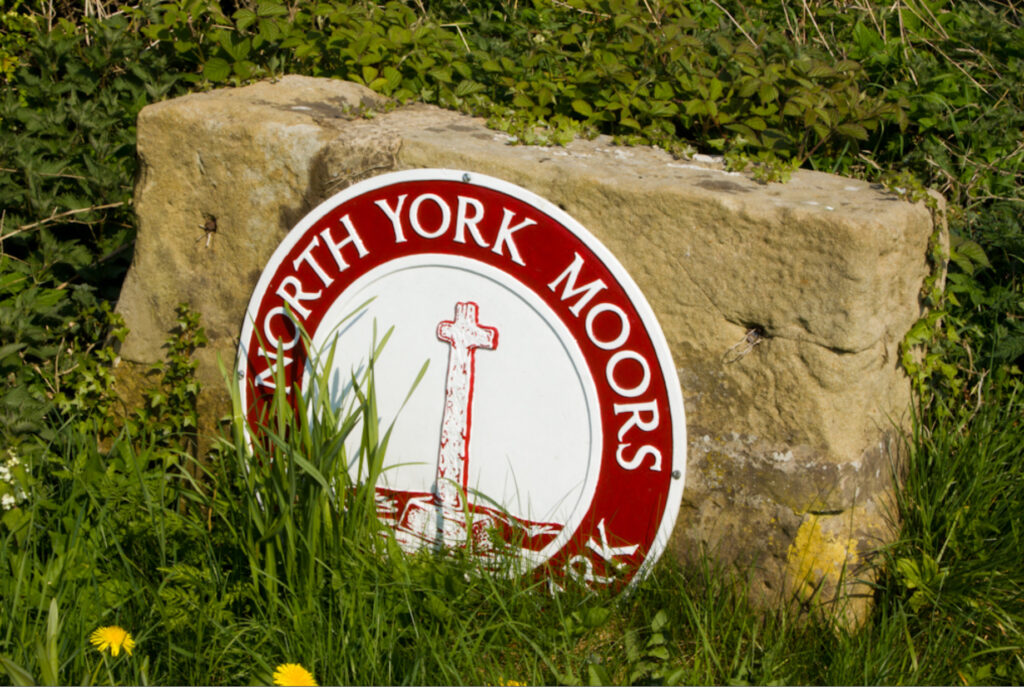
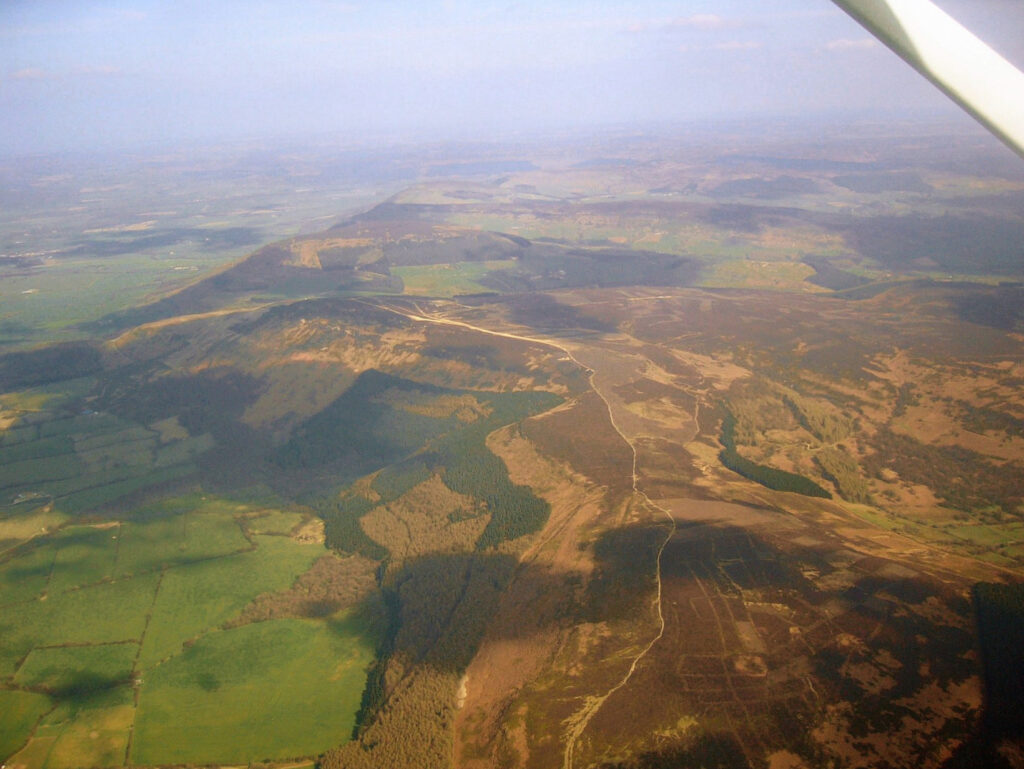
Here is a list of historical and culturally interesting towns in and around the North York Moors:
Within the North York Moors
1. Helmsley
• Highlights:
• Helmsley Castle – A medieval fortress with ruins dating back to the 12th century.
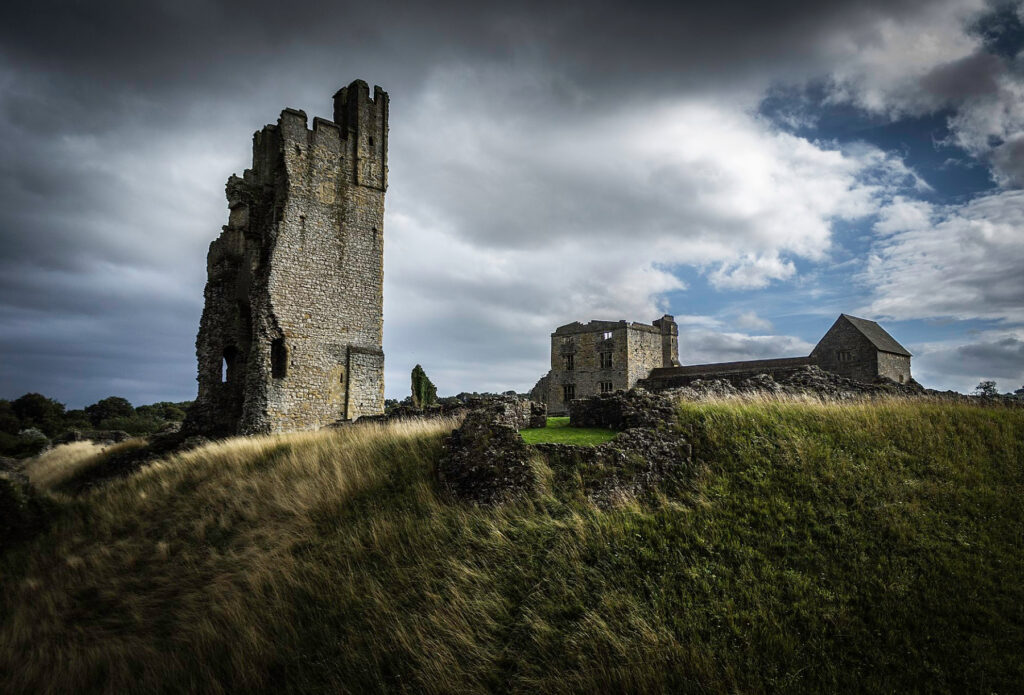
• Rievaulx Abbey – A famous 12th-century Cistercian monastery nearby.
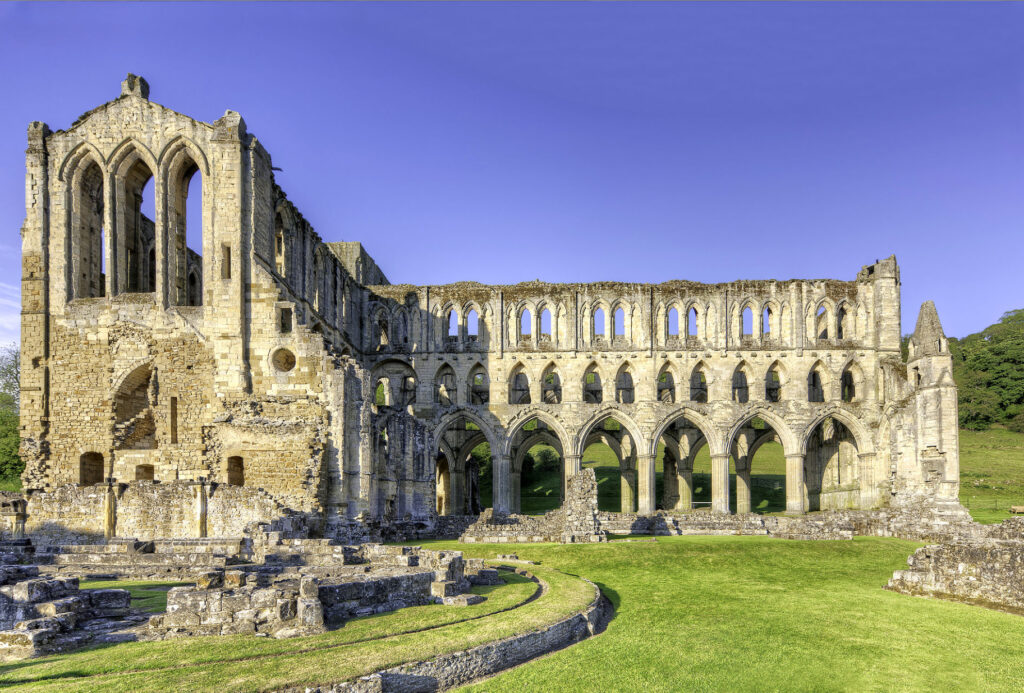
• Market Town Charm – Stone buildings, boutique shops, and traditional pubs.
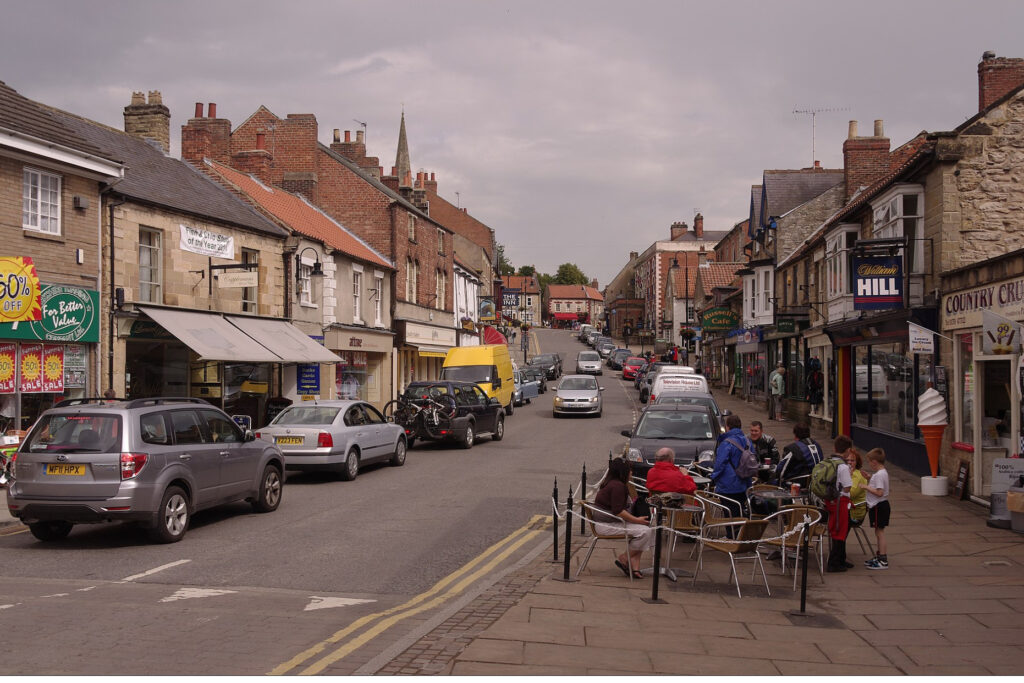
• Cultural Note: Known as a gateway to the moors with a vibrant arts scene.
2. Pickering
• Highlights:
• Pickering Castle – A well-preserved Norman motte-and-bailey castle.
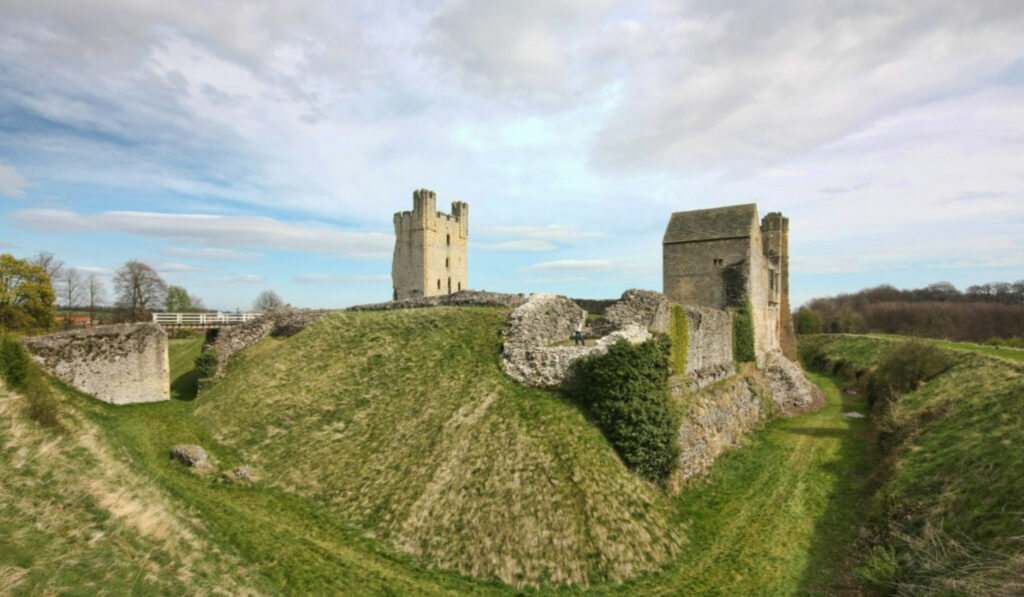
• North Yorkshire Moors Railway – A heritage steam railway operating through scenic moorland.
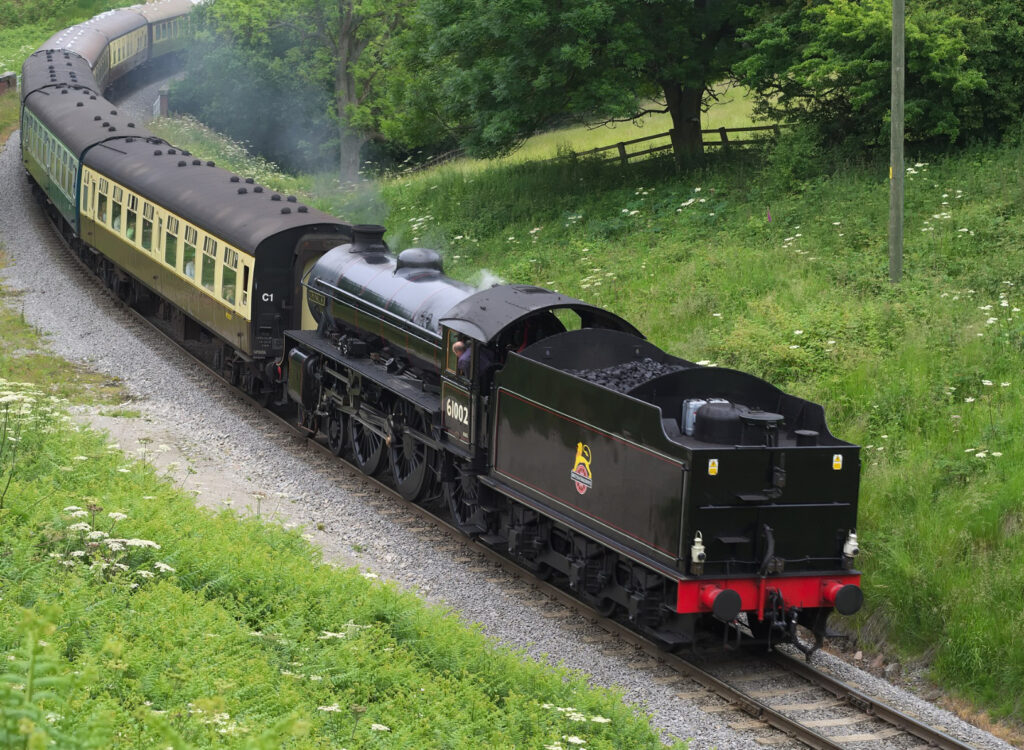
• St Peter and St Paul’s Church – Noted for medieval wall paintings.
• Cultural Note: A historic market town with strong connections to medieval history.
3. Goathland
• Highlights:
• Filming location for the TV series “Heartbeat” and Hogsmeade Station in Harry Potter.
• Scenic walking trails and waterfalls such as Mallyan Spout.
• Cultural Note: A picturesque village with Victorian and Edwardian charm.
4. Guisborough
• Highlights:
• Gisborough Priory – Remains of a 12th-century Augustinian priory.
• Gateway to Roseberry Topping, a distinctive hill offering panoramic views.
• Cultural Note: Strong monastic heritage and links to early medieval Christianity.
Nearby Towns and Villages
5. Whitby (Coastal Town)
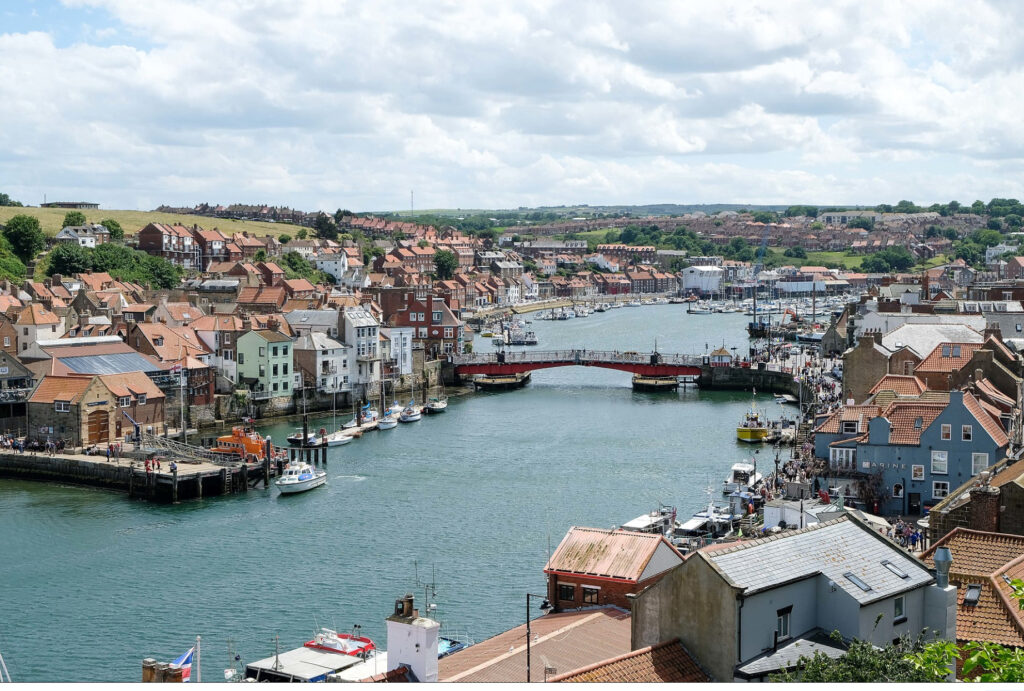
• Highlights:
• Whitby Abbey – Gothic ruins linked to Bram Stoker’s Dracula.
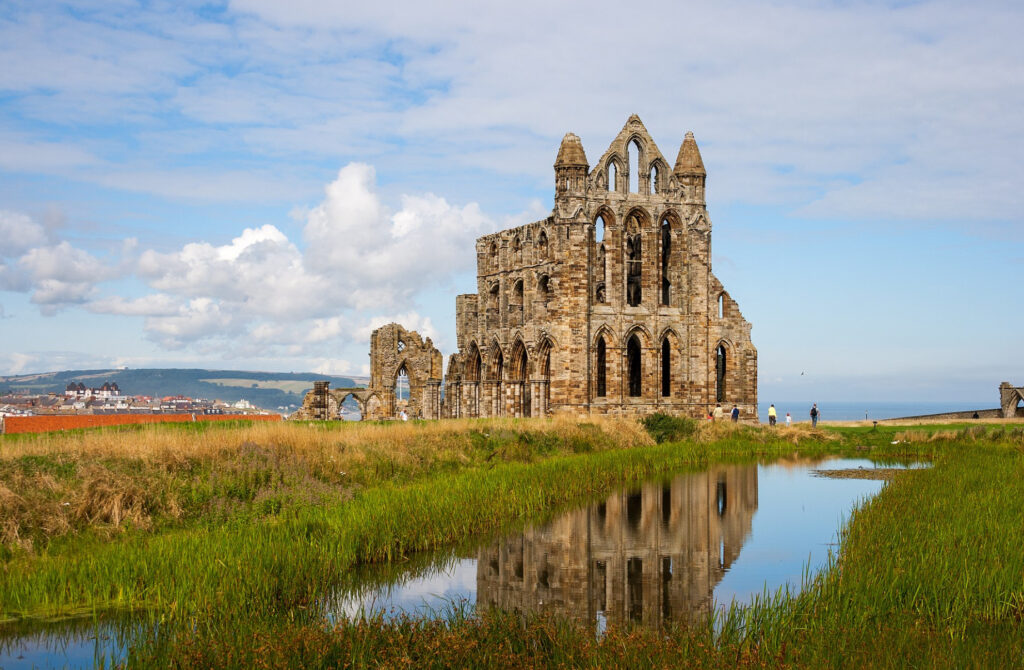
• Captain Cook Memorial Museum – Celebrating the explorer’s legacy.
• 199 Steps – Leading to the abbey with stunning views of the sea.
• Cultural Note: Famous for literary connections, maritime history, and the Goth Weekend festival.
6. Robin Hood’s Bay (Coastal Village)
• Highlights:
• Smugglers’ history with narrow, winding streets and old fishermen’s cottages.
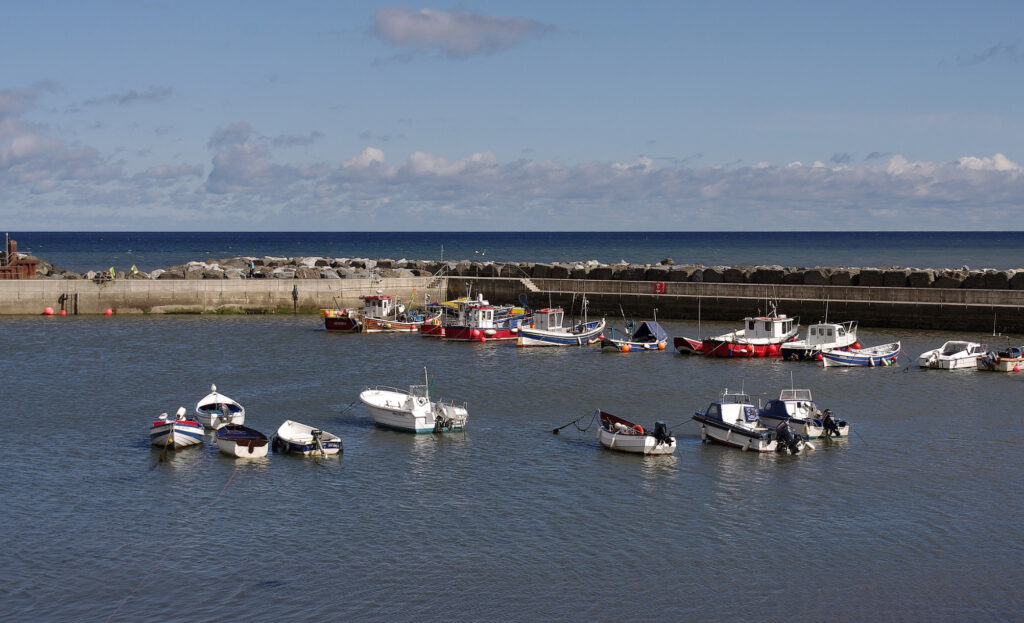
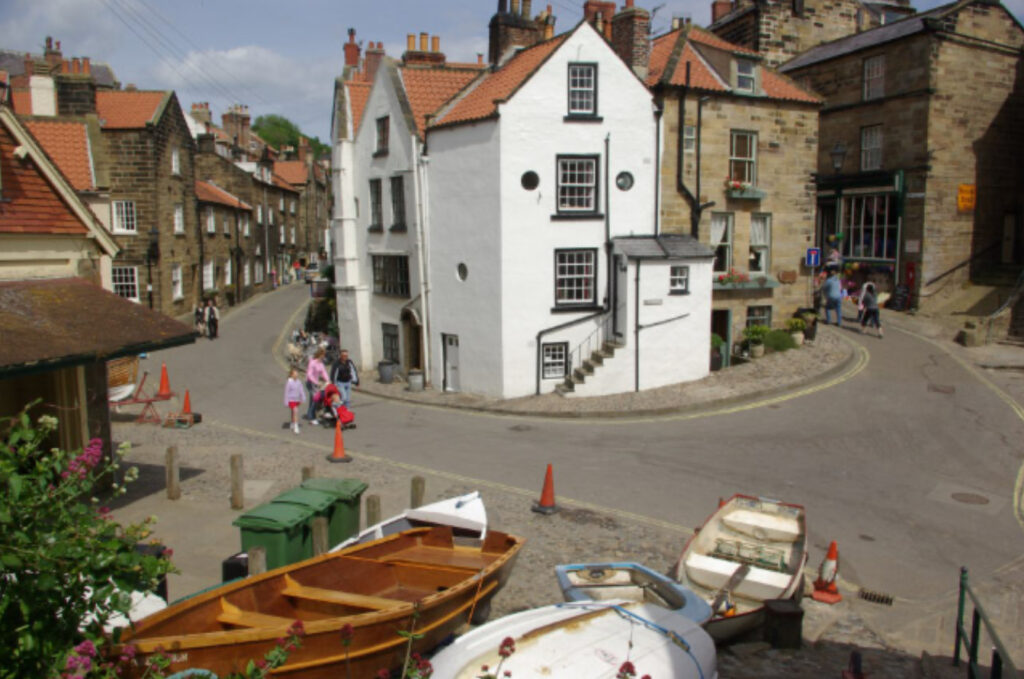
• Fossil hunting along the Jurassic coast.
• Cultural Note: Once a hub for smuggling, it retains a romantic, historic atmosphere.
7. Malton
• Highlights:
• Known as “Yorkshire’s Food Capital” with farmers’ markets and artisan shops.
• Eden Camp Modern History Museum – A WWII-themed museum.
• Cultural Note: Popular for food lovers and its Roman and Norman roots.
8. Thirsk
• Highlights:
• World of James Herriot Museum – Celebrating the author and vet Alf Wight.
• Traditional market square and cobbled streets.
• Cultural Note: Featured in the All Creatures Great and Small books and TV adaptations.
9. Scarborough (Coastal Town)
• Highlights:
• Scarborough Castle – Overlooking the sea with 2,500 years of history.
• Spa Complex – Victorian elegance and seaside entertainment.
• Cultural Note: England’s first seaside resort, popular since the 17th century.
10. Kirkbymoorside
• Highlights:
• Traditional market town with a history dating back to Viking times.
• Close to Hutton-le-Hole, home to the Ryedale Folk Museum showcasing rural heritage.
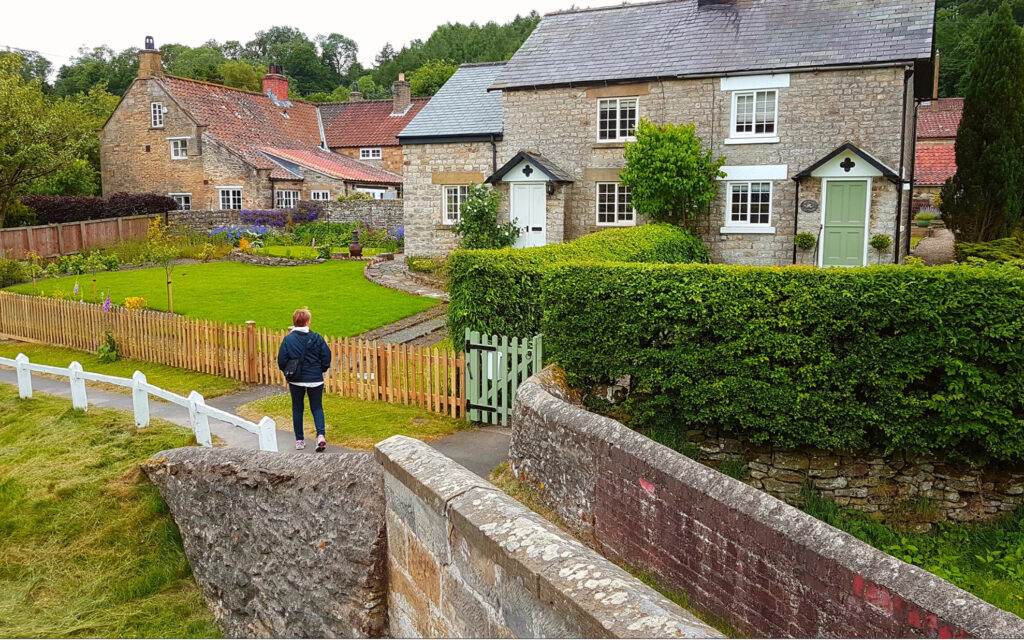
• Cultural Note: Known for its connections to craftwork and farming traditions.
These towns and villages provide a mix of historical landmarks, cultural heritage, and natural beauty, making them ideal for exploring the history and character of the North York Moors and its surroundings.
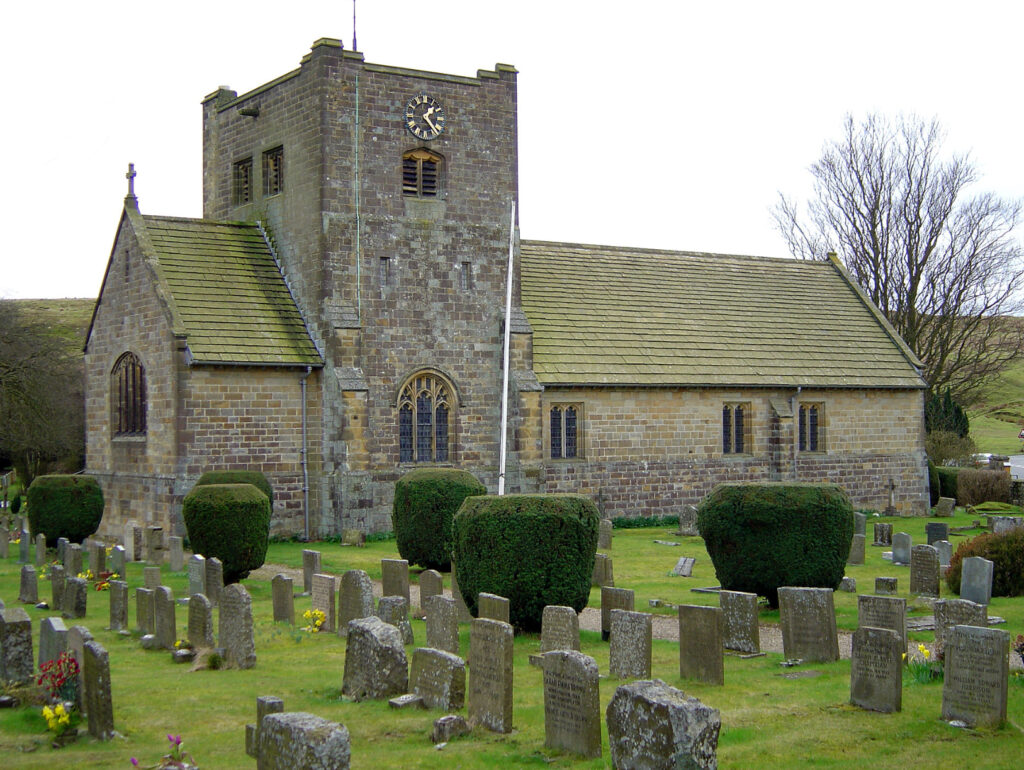
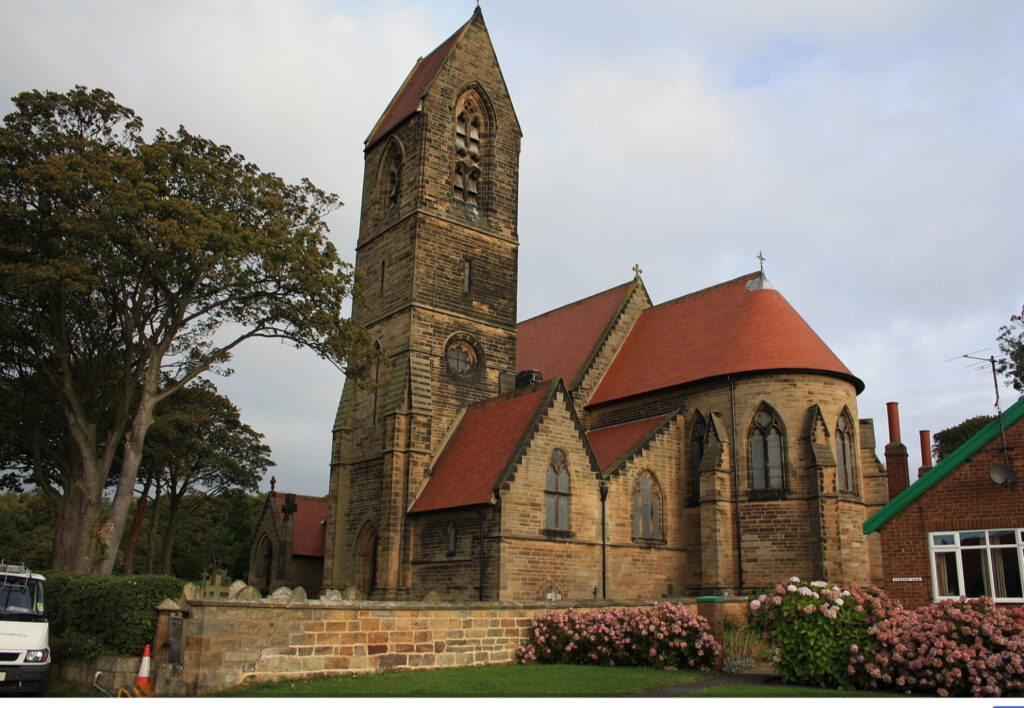
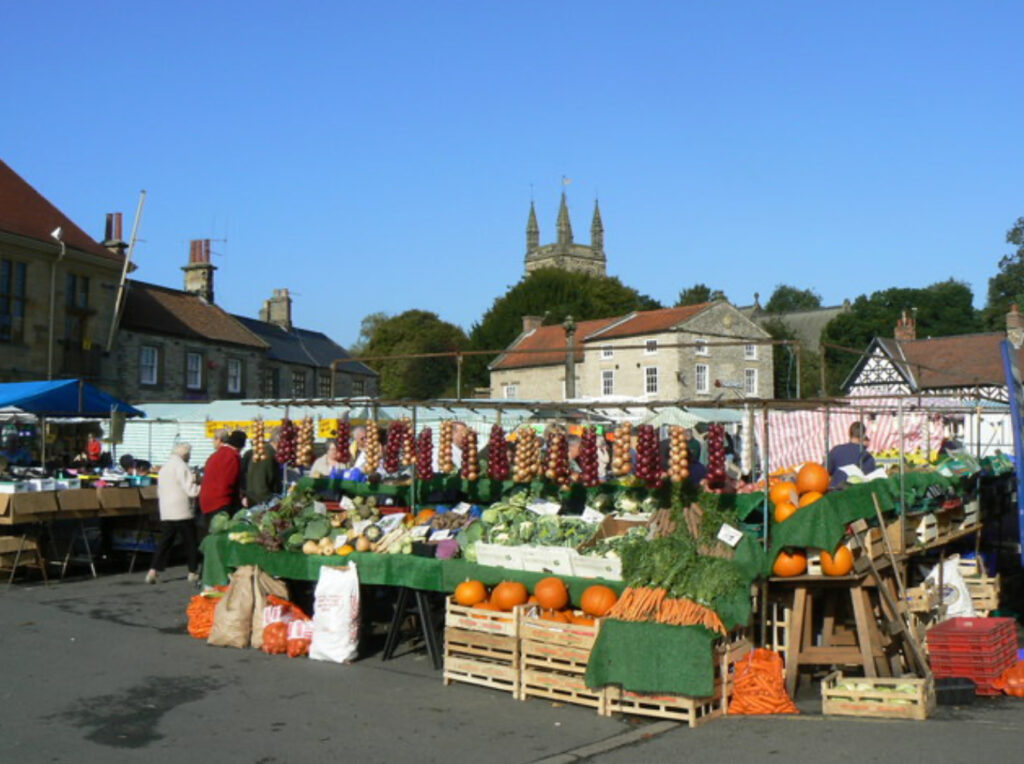

Three-Day Itinerary for North York Moors: Historical Towns, Easy Hiking, and Local Food
Day 1 – Helmsley and Rievaulx Abbey
Morning:
• Arrive in Helmsley – Explore this charming market town.
• Visit Helmsley Castle – Discover its 12th-century ruins and exhibitions.
• Stroll through Helmsley Walled Garden, a beautifully restored Victorian garden.
Lunch:
• The Feathers Hotel – Traditional Yorkshire dishes like Yorkshire pudding with roast beef.
Afternoon:
• Walk or take a short drive (2 miles) to Rievaulx Abbey – A stunning 12th-century monastery set in a tranquil valley.
• Enjoy an easy 3-mile circular hike around Rievaulx Terrace for panoramic views of the abbey and countryside.
Evening:
• Drive to Pickering for your overnight stay.
Accommodation:
• The White Swan Inn (Pickering) – A boutique coaching inn with unique character and locally-inspired menus.
Dinner:
• The White Swan Restaurant – Try game pie or locally-sourced trout.
Day 2 – Pickering, Goathland, and the Moors Railway
Morning:
• Visit Pickering Castle, a Norman stronghold.
• Explore St Peter and St Paul’s Church for its medieval wall paintings.
• Board the North Yorkshire Moors Railway for a scenic steam-train ride through the moorland.
Lunch:
• Mallyan Spout Hotel (Goathland) – Enjoy classic British pub fare like ploughman’s lunch.
Afternoon:
• Explore Goathland – Known as Aidensfield in the TV series Heartbeat and the Hogsmeade Station in Harry Potter.
• Take an easy 2-mile hike to Mallyan Spout Waterfall, surrounded by forest and streams.
Evening:
• Head to Whitby for your overnight stay.
Accommodation:
• La Rosa Hotel (Whitby) – A quirky, Victorian-themed boutique hotel overlooking the harbor and abbey.
Dinner:
• The Magpie Café – Famous for fish and chips using locally caught seafood.
Day 3 – Whitby and Robin Hood’s Bay
Morning:
• Explore Whitby Abbey, the inspiration for Dracula, and climb the 199 Steps for views of the town and sea.
• Visit the Captain Cook Memorial Museum to learn about the explorer’s legacy.
Lunch:
• Abbey Wharf – Fresh seafood and Whitby crab sandwiches.
Afternoon:
• Drive to Robin Hood’s Bay (6 miles).
• Wander the narrow, cobbled streets of this former smuggling village.
• Take an easy coastal walk (2–3 miles) along the Cleveland Way for dramatic views of the cliffs and North Sea.
Evening Departure:
• Conclude your visit with a light dinner or tea at Tea, Toast & Post, a cozy café in Robin Hood’s Bay, before heading home.
Local Food Specialties to Try During Your Trip:
• Whitby Scampi – Local seafood delicacy.
• Parkin Cake – Traditional gingerbread-like cake from Yorkshire.
• Fat Rascal – Fruity scones served with cream and jam.
• Wensleydale Cheese – Locally produced and often paired with fruitcake.
This itinerary combines history, scenic hikes, and regional flavors, while offering unique accommodations for an immersive experience in the North York Moors.

